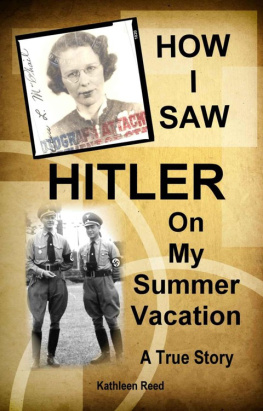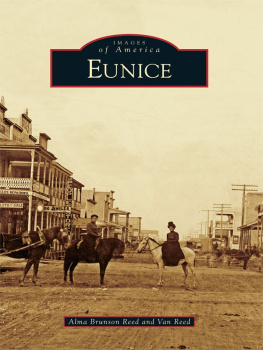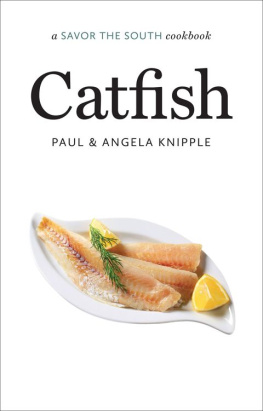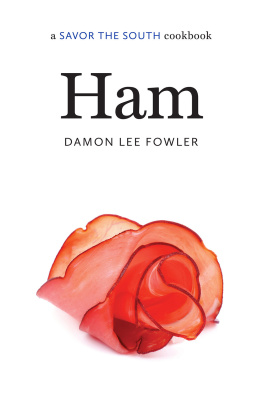Reed - Barbecue: a SAVOR THE SOUTH cookbook
Here you can read online Reed - Barbecue: a SAVOR THE SOUTH cookbook full text of the book (entire story) in english for free. Download pdf and epub, get meaning, cover and reviews about this ebook. City: Southern States, year: 2016, publisher: The University of North Carolina Press, genre: Home and family. Description of the work, (preface) as well as reviews are available. Best literature library LitArk.com created for fans of good reading and offers a wide selection of genres:
Romance novel
Science fiction
Adventure
Detective
Science
History
Home and family
Prose
Art
Politics
Computer
Non-fiction
Religion
Business
Children
Humor
Choose a favorite category and find really read worthwhile books. Enjoy immersion in the world of imagination, feel the emotions of the characters or learn something new for yourself, make an fascinating discovery.

- Book:Barbecue: a SAVOR THE SOUTH cookbook
- Author:
- Publisher:The University of North Carolina Press
- Genre:
- Year:2016
- City:Southern States
- Rating:5 / 5
- Favourites:Add to favourites
- Your mark:
- 100
- 1
- 2
- 3
- 4
- 5
Barbecue: a SAVOR THE SOUTH cookbook: summary, description and annotation
We offer to read an annotation, description, summary or preface (depends on what the author of the book "Barbecue: a SAVOR THE SOUTH cookbook" wrote himself). If you haven't found the necessary information about the book — write in the comments, we will try to find it.
Barbecue: a SAVOR THE SOUTH cookbook — read online for free the complete book (whole text) full work
Below is the text of the book, divided by pages. System saving the place of the last page read, allows you to conveniently read the book "Barbecue: a SAVOR THE SOUTH cookbook" online for free, without having to search again every time where you left off. Put a bookmark, and you can go to the page where you finished reading at any time.
Font size:
Interval:
Bookmark:
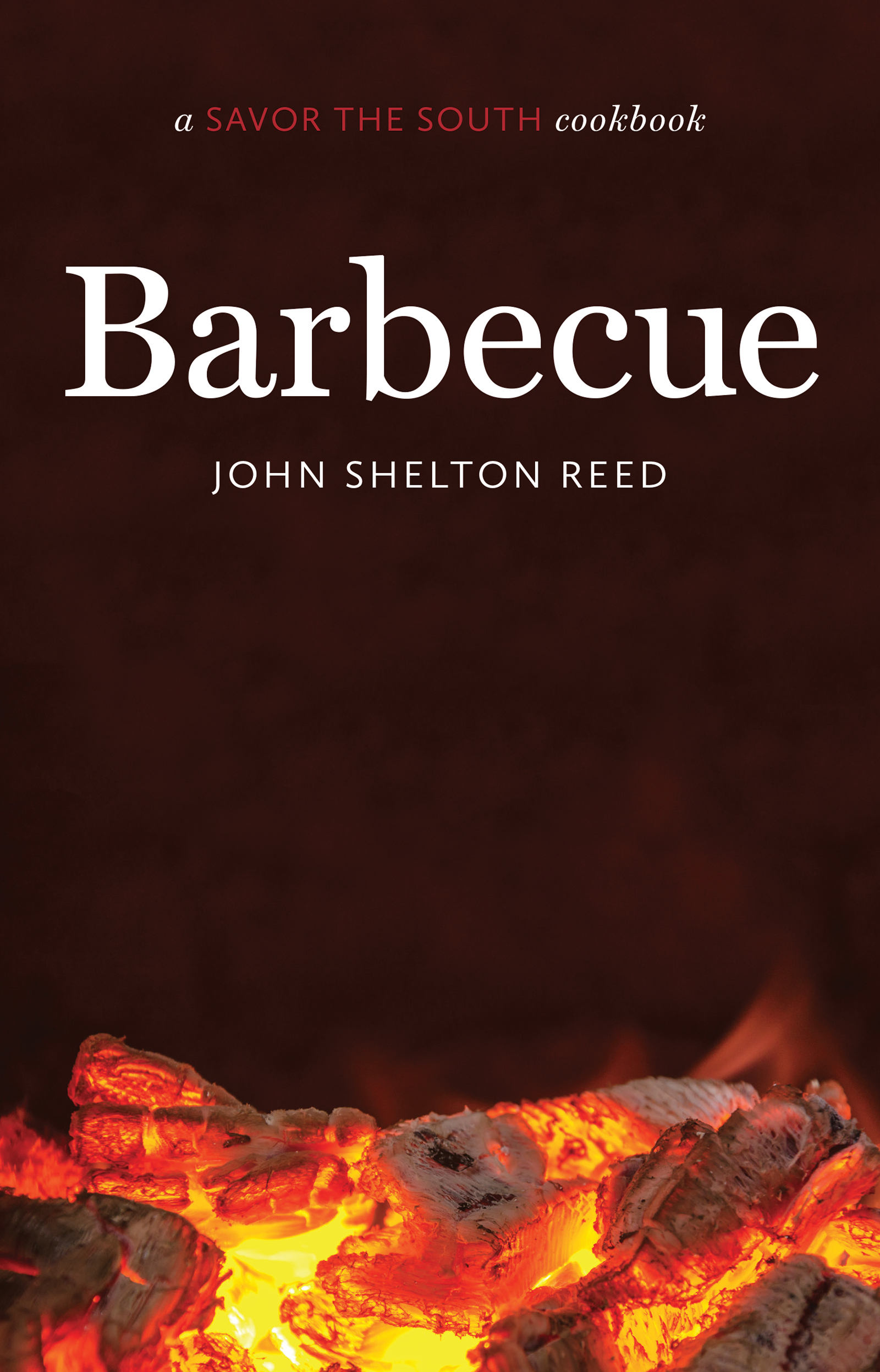

a SAVOR THE SOUTH cookbook
Barbecue
SAVOR THE SOUTH cookbooks
Barbecue, by John Shelton Reed (2016)
Greens, by Thomas Head (2016)
Crabs and Oysters, by Bill Smith (2015)
Sunday Dinner, by Bridgette A. Lacy (2015)
Beans and Field Peas, by Sandra A. Gutierrez (2015)
Gumbo, by Dale Curry (2015)
Shrimp, by Jay Pierce (2015)
Catfish, by Paul and Angela Knipple (2015)
Sweet Potatoes, by April McGreger (2014)
Southern Holidays, by Debbie Moose (2014)
Okra, by Virginia Willis (2014)
Pickles and Preserves, by Andrea Weigl (2014)
Bourbon, by Kathleen Purvis (2013)
Biscuits, by Belinda Ellis (2013)
Tomatoes, by Miriam Rubin (2013)
Peaches, by Kelly Alexander (2013)
Pecans, by Kathleen Purvis (2012)
Buttermilk, by Debbie Moose (2012)
2016 The University of North Carolina Press
All rights reserved. Manufactured in the United States of America.
SAVOR THE SOUTH is a registered trademark of the University of North Carolina Press, Inc.
Designed by Kimberly Bryant and set in Miller and Calluna Sans types by Rebecca Evans.
The paper in this book meets the guidelines for permanence and durability of the Committee on Production Guidelines for Book Longevity of the Council on Library Resources. The University of North Carolina Press has been a member of the Green Press Initiative since 2003.
Jacket illustration: courtesy depositphotos.com/ yuratosno.
Library of Congress Cataloging-in-Publication Data
Reed, John Shelton, author.
Barbecue / John Shelton Reed.
pages cm (A savor the South cookbook)
Includes index.
ISBN 978-1-4696-2670-3 (cloth : alk. paper)
ISBN 978-1-4696-2671-0 (ebook)
1. BarbecuingSouthern States. 2. Cooking, AmericanSouthern style. I. Title. II. Series: Savor the South cookbook.
TX840.B3R4445 2016 641.76dc23
2015028000

a SAVOR THE SOUTH cookbook
Barbecue
To avoid any misunderstanding, lets get something straight up front. Im not going to tell Koreans or Californians that their barbecue isnt. If someone in Seattle wants to barbecue salmon on a cedar plank, thats fine and I hope Im invited. I wont even call out some Midwesterner in a Kiss the Chef apron who thinks hes barbecuing when he grills weenies in his backyard. Chacun a son cue, as the French might say, if they knew anything about the subject. But when food writer Jeffrey Steingarten said that barbecue is simply the most delectable of all traditional American foods, he wasnt talking about that stuff. He meant Southern barbecue (or barbeque, as its often spelled in the South), and when I say barbecue so do I. That means meat cooked for a long time at a low temperature with heat and smoke from burning wood or wood coals. Well come back to the question of what kind of meat, but low and slow cooking in the presence of wood smoke is pretty much what its all about.
Of course, Southerners allow exceptions to every rule, and in this book you will encounter a few legendary barbecue places that cook hot and fast. But they dont compromise on that wood smoke. No one should compromise on that. Dont confuse the (ahem) sacred and propane. Its true that some scoundrels put barbecue sauce on oven-cooked meat and call it barbecue, but thats like putting kosher salt on it and calling it kosher. Barbecue isnt about sauce; in fact, for most Southerners sauce is almost an afterthought (which doesnt mean were not ready to fight about it) and Texans often use no sauce at all. Sauce is a big deal in Missourione reason to question that states Southern bona fidesbut the Show Me State is in this book if only because it had a star in the Confederate flag. Yes, that was more the Confederacys decision than Missouris, but if it was good enough for Jefferson Davis its good enough for me.
But Ive digressed. That often happens when Southerners talk about barbecueor anything else, for that matter. Back to the introduction.
Steingarten calls barbecue the gaudiest jewel in the crown of the American South, where most of the finest traditional American cooking originated, and thats what this book is about: Southern barbecue and its usual accessories.
You dont have to tell me that the world doesnt need another barbecue cookbook. I own a couple of dozen. But this series needs a barbecue cookbook. So Ive tried to make this as much educational as culinary, with recipes for traditional dishes or approximations of traditional dishes, often ones that illustrate some point about the development of regional styles of barbecue. These may not be the best recipestheyre not necessarily the tastiest and God forbid that they should be innovativebut they are typical ones. Plenty of those other cookbooks offer variations, and some of them are undoubtedly improvements. You might want to try them sometime, but first you should understand what they are variations on.
So, how did this gaudy jewel come to be? Or rather, since Southern barbecue is intensely local, how did these several gaudy jewels, this glorious mosaic, come to be? A little history is in order.
People have always and almost everywhere known that low and slow cooking is a good way to handle tough or gnarly meat, but we first encounter something Southerners would recognize as barbecue in the West Indies in the 1500s, where native Indians and Spanish newcomers had begun cooking European hogs on a sort of wooden frame that the Indians had formerly used for a miscellany of rodents, reptiles, and fish. In the 1690s a Dominican missionary observed that the Indians served the meat with a splash of lime juice and hot peppers. The Indians called the frame something that the Spanish heard as barbacoa, from which the English took the word barbecue (so Yankees and Australians have a venerable precedent when they speak of putting something on the barbecue). Very quickly the wordthough not immediately the saucemigrated to the English colonies on the eastern seaboard of North America, where barbecuing came to mean cooking meat more or less Caribbean-style and big community barbecues continued a British hog-roast tradition. These occasions saw hogs, sheep, sides of beef, and many types of gamesquirrels, possums, in Maryland even turtlescooked over barbecue pits (literally pits, or trenches) full of live coals, then chopped or pulled apart by hand.
In the early colonial era these events were common as far north as New England, but by the time of the Revolution the community barbecue had become identified with the states from the Chesapeake region south to Georgia, where regular barbecue days brought out all sorts and conditions of citizenry to eat, drink, dance, and gamble. (George Washington won eight shillings playing cards at an Alexandria barbecue in 1769.) A young Virginian writing to a London friend in 1784 described a typical eighteenth-century barbecue: Its a shoat & sometimes a Lamb or Mutton & indeed sometimes a Beef splitt into & stuck on spitts, & then they have a large Hole dugg in the ground where they have a number of Coals made of the Bark [?] of Trees, put in this Hole. & then they lay the Meat over that within about six inches of the Coals, & then they Keep basting it with Butter & Salt & Water & turning it every now and then, until it is done, we then dine under a large shady tree or an harbour made of green bushes, under which we have benches & seats to sit on when we dine sumptuously. This sounds great if you get to sit under the harbourless so, of course, if youre a slave on the digging and basting crew.
Font size:
Interval:
Bookmark:
Similar books «Barbecue: a SAVOR THE SOUTH cookbook»
Look at similar books to Barbecue: a SAVOR THE SOUTH cookbook. We have selected literature similar in name and meaning in the hope of providing readers with more options to find new, interesting, not yet read works.
Discussion, reviews of the book Barbecue: a SAVOR THE SOUTH cookbook and just readers' own opinions. Leave your comments, write what you think about the work, its meaning or the main characters. Specify what exactly you liked and what you didn't like, and why you think so.

